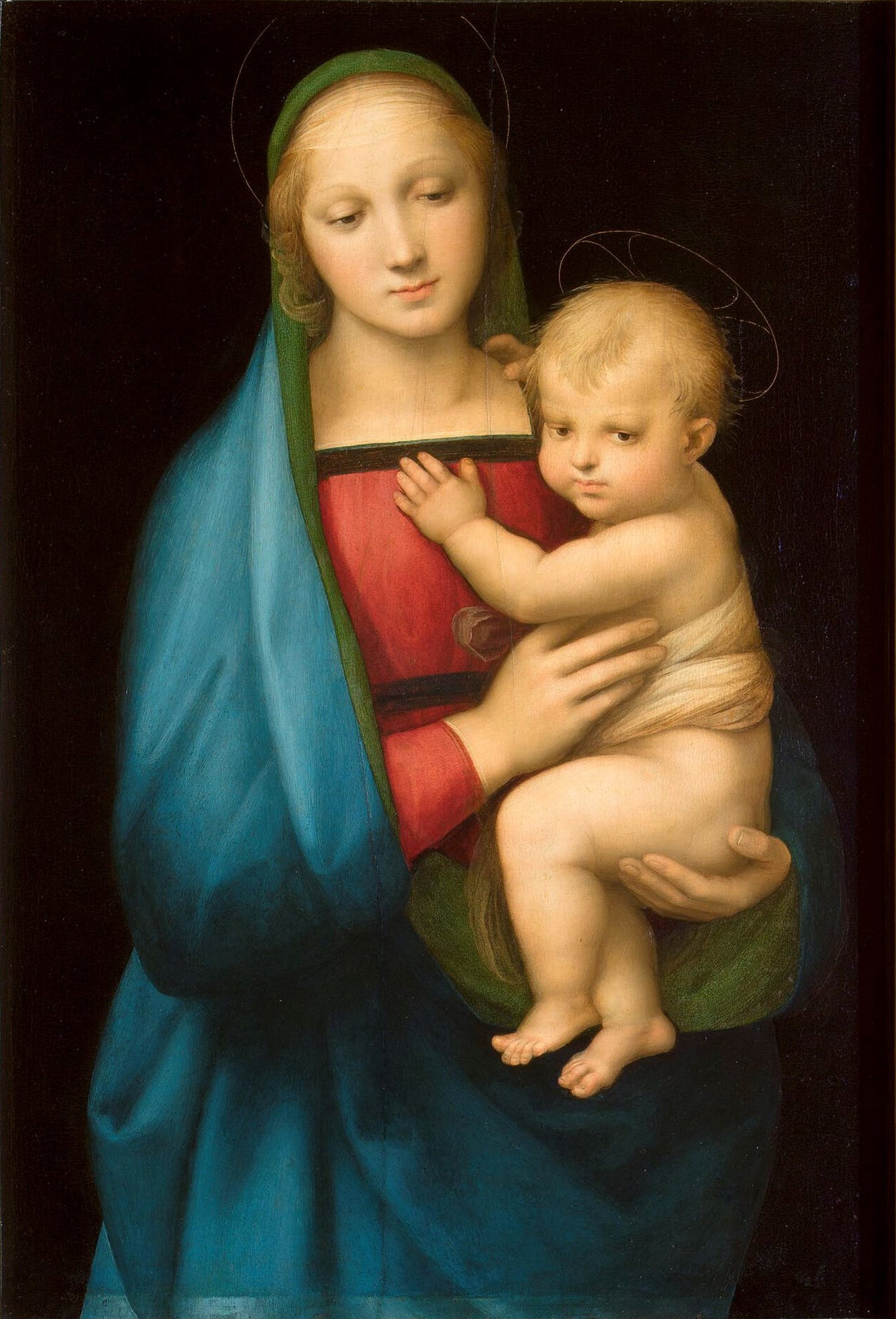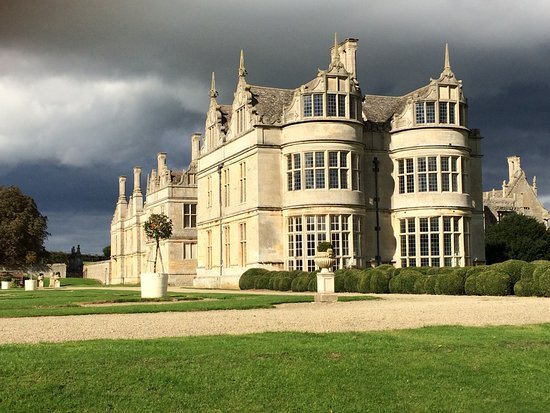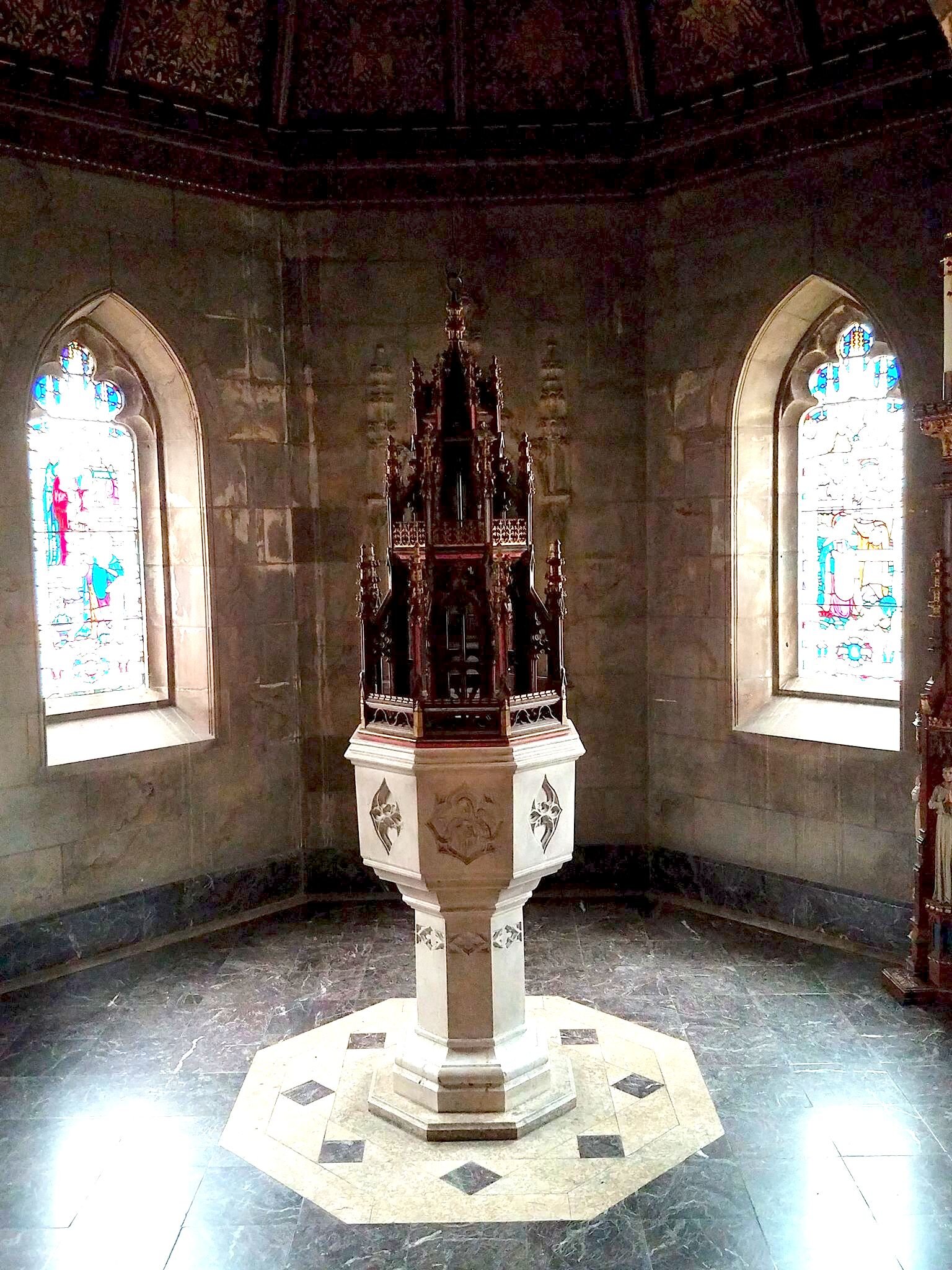This is the second in a series of three. In Part 1, last week, I developed the idea of the impulse for beauty as a principle of choice like the moral conscience. In Part 2, here, I suggest ways in which the creative impulse for beauty can be stimulated and formed in our own lives; in Part 3, next week, as a meditation of the themes outlined, I will focus on a single painting of the Sacred Heart of Jesus which is embedded with design principles that conform to the pattern of beauty that can permeate our lives too.
.
How do we develop the impulse of beauty so that it can be a guide in the choices we make in life? We have different abilities to apprehend beauty and so we can’t always be sure that we can trust our judgments. Just as our fallen natures and cultural influences can distort our perceptions of what is good and true, they can diminish our abilities to apprehend beauty too. We need to find a way, therefore, to develop our capacity to recognize what is truly beautiful in order to be able to follow the Way of Beauty. The answer lies, I believe in the traditional formation of Catholic artists and a traditional Catholic education that transmits the essentials of the practice of our faith.
The greatest transformation for the good in any aspect of our human nature – including the impulse for beauty – is achieved through a personal encounter with Jesus, most especially, in the Eucharist. However, there are some specific things that can be done to stimulate and develop the artistic conscience within us in support of this.
Study Scripture
The life of Christ is the object lesson in living a beautiful life, so the more we study it and imitate it, the more we develop that faculty for living a beautiful life in us. Within that, we might consider, for example, the Eight Beatitudes. The Beatitudes are a set of affirmative principles that guide us in what we ought to do, in contrast with the Ten Commandments which are prohibitive and tell us what not to do.
The Beatitudes are called so because in their Latin form each begins with the word “Beati” meaning “happy”. Each is offered as a principle for a happy, ordered, and beautiful life. Study of, and meditation upon both the Ten Commandments and the Eight Beatitudes will help to impress their meanings upon our hearts so that our natural inclination will be to apply them in the myriad of different situations that we face each day.
Similarly the Wisdom books of the bible (books of Job, Psalms, Proverbs, Ecclesiastes, the Song of Songs (Song of Solomon), the Book of Wisdom, and Sirach (Ecclesiasticus) can be studied as sources of affirmative principles for living. They impart knowledge that leads one to live rightly in relation to God, and in relation to neighbor. The Psalms and Proverbs especially can be fruitful. The Psalms of course are at the heart of our liturgy, and Proverbs was the book traditionally studied by catechumens prior to being received into the Church.
Compare Your Life with the Ideal of Blessedness and of the Life of Christ
When I was in my mid-twenties, over 30 years ago now, I was persuaded to undertake a series of spiritual exercises in order to determine my calling in life. I describe them in my book, The Vision for You. What I didn’t realize was that this was really a process that would enable me to re-order my whole life and that this re-ordering of my life was the real gift that I was being offered.
As part of this, I was encouraged to consider how “blessed” I was each day. As well as the more conventional examination of conscience, which considers contravention of the moral law, I was encouraged to adopt a daily examen that focused also on the consideration of my sins as a rupture in the order of my life and hence in my relationship with God. So not only did I ask myself, “What have I done wrong?”, I also asked myself, “What am I unhappy about, and why?” I wrote about these exercises in detail in my book, The Vision for You - How to Discover the Life You Were Made For.
Then I was guided as to how to analyze my unhappiness so as to see how it was my own self-centeredness – sin in other words – that was the cause and then how to correct it with God’s help. It is a daily practice that I still keep. In this understanding, sin can be voluntary or involuntary, known or unknown (until this process highlights it). The effects of this process in my life, by the way, have been spectacular. It led not only to a happier and more fulfilling life, but also to my choosing a path that allowed me to become an artist and, most importantly, to my conversion to Catholicism!
Pray with, and Meditate upon the Image of Christ in Sacred Art
Aside from the words that describe the life of Christ and Salvation History, we can become acquainted with Jesus Christ through the traditional images of the person of Christ in sacred art. The style and content of Catholic liturgical art were developed so as to communicate through beauty aspects of the Word in a single sight that, in some instances, are truths beyond words and only grasped in the heart in love. Accordingly, we can follow the example of Christians through centuries and develop the habit of praying with sacred art. My suggestion is to create an icon corner in your home so as to create a domestic church and make it the focus of your daily prayers.
At the heart of that icon or image corner should be three images: first on the left, Mary with Our Lord, second in the center Christ on the cross, and third on the right the Risen Christ or Christ in heavenly glory. Examples of the latter might be Christ in Majesty (enthroned), Christ Pantocrator (blessing), or the Mandylion (Christ’s face on a cloth, for example a Veronica cloth image), or Christ at the Transfiguration.
These categories of image speak to us collectively of the essence of salvation history: Christ the Son of God became incarnate of the Virgin Mary, taking his humanity from her.
Madonna and Child, Raphael, 16th century, Italy
He suffered and died on the cross, and rose from the dead. By our Baptism, we die spiritually with Christ and he takes on our sin and suffering.
We rise with him in Confirmation by the power of the Holy Spirit, and through Communion, we partake of the divine nature entering into the mystery of the Trinity.
Christ Pantocrator by Martin Earle, 21st century, English
This is the moment that Christian joy transcends suffering. The actual external cause of the suffering may still be present in our lives, but now there is a consolation that is deeper and greater through Christ. This is the joy and peace that “surpasses understanding” that is on offer to all, even those who mourn and who are poor in spirit! This is the Way of Beauty.
How to Pray with Sacred Art
Long books have been written on the subject of how to pray with sacred art, but frankly, I’m not sure why or how they manage to fill so many pages. In fact, praying with sacred art is not difficult. You pray as you would normally, except you keep your eyes open and look at the images as you do so. That’s it. There’s nothing more to add!
Adopt the Pattern of Christ In Your Life; the Importance of the Number Eight
To the degree that we seek to adopt, consciously, the pattern of the Light and of Christ as best we can grasp it and live it, beginning with our prayer lives, we are living the pattern of divine beauty and order. The number eight is not the only governing principle of that pattern, but it is perhaps the most important and it is a good starting point for those looking to bring the pattern of beauty into their lives.
Many will be familiar with the idea that the number eight is the governing number of beauty in music. The eight-note scale, the octave, is the key to all musical harmony, as we know, but it also has a spiritual beauty:
Christ is the “eighth day” of creation, who by his life, death, and resurrection ushers in the new covenant. Seven is the number of the old covenant, and now eight is the number of the new. We celebrate his resurrection on Sunday, which is considered the eighth day of the week and, simultaneously the first day of the week.
Jesus is the Rising Sun, rising in the East, the orient, to whom we orient our prayer. The rising sun is the symbol of the second coming of the Light, the Son of God in majesty. The number eight, properly used, is the mark of this affirmative, enjoining principle of beauty that draws us to itself and directs us to Him. The eight Beatitudes are structured, accordingly, even beyond the words they contain, to speak of the pattern of Christ, and we are hardwired by God to respond to its pattern just as we are made to respond to the beauty of the cosmos.
A 14th-century, Palestinian illumination of the opening to the Gospel of St Mark. Note the octagon in the center of the page.
Similarly, the seven petitions in the Lord’s prayer are really eight petitions, for the fourth “Give us this day our daily bread,” has a double meaning. It means our daily food for physical nourishment and the body of Christ in the Eucharist for our spiritual nourishment. Again, the pattern of eight draws us into a deeper grasp meaning of the prayer.
When we lead a life that revolves around a weekly cycle of Sunday Mass it is ordered to the Eighth Day, which is a repeated celebration of an Octave of Easter throughout the year. In the context of the liturgy, an ‘octave’ is a reference to the commemoration of a feast or even eight days after the first.
If we pray the Liturgy of the Hours, too, then we are participating in the daily cycle of prayer of the Church. Praying the Hours was seen traditionally as a process of tithing time – giving an appropriate proportion of the day to God. Following the ancient Jewish practice of praising God, “seven times a day” and “at midnight”, as described in Psalm 118(119), Christians since the time of the Apostles have prayed eight occasions of prayer in the day. The more we can order our external lives to this pattern of prayer, as part of the Christian life, the more that we order our spirits and our hearts – where the spiritual and material are enjoined – to Christ. If we cannot manage the whole monastic Office, and most of us cannot, we might perhaps aim to mark each hour each day with a single psalm. Traditionally the following psalms are said every day at these Offices, and so as a suggestion, one might start here:
Vespers (evening) Psalm 103(104); sung in Mode 1 or Tone 1
Compline (before bed) Psalm 50(51); sung in Mode 2 or Tone 2
Matins (midnight interrupting sleep, or on awakening) Psalm 120(121); sung in Mode 3 or Tone 3
Lauds (main prayer in the morning) Psalm 62(63); sung in Mode 4 or Tone 4
Prime (around 6 or 7 am) Psalm 5; sung in Mode 5 or Tone 5
Terce (around 9 am) Psalm 24(25); sung in Mode 6 or Tone 6
Sext (around midday) Psalm 53(54); sung in Mode 7 or Tone 7
None (around 3 pm) Psalm 83(84).sung in Mode 8 or Tone 8
( Reference to the eight offices are found in The Apostolic Tradition written by Hippolytus of Rome in the early 3rd century AD and in the Rule of St Benedict, from the 6th century AD, for example. Also, Robert Taft’s Liturgy of the Hours East and West published by Liturgical Press in 1993 is a useful account of the history of the content of the Hours.)
If it is too much to do all eight, begin with whatever you think you can achieve daily, even if it is just one or two Offices in the day. Gradually we start to find the time to fit more in as we allow God to guide us in conforming our hearts to the pattern of sacred time that permeates all of Christian culture.
So, for example, fonts and baptistries are designed with octagonal symmetry for the same reason. Very often the tiled patterns on the floors of churches are ornate and beautiful patterns that are based upon repeated octagons.
Another beautiful example of how this pattern can appear in the mundane and create beauty is in architecture. Today, architects designing in the modern idiom create buildings with evenly sized stories and windows (this is why so much modern architecture is so monotonous). Traditionally, however, (going back to the earliest Christian times and up to the early 20th century) buildings were given their beauty by having differently proportioned stories in which there was a relation of these different sized parts to each other that was harmonious. So ideally three different sized stories in a building were constructed so as to relate to each other beautifully just as three different musical notes can create a single, beautiful chord. Aside from music, the numerical values that governed these sizes come from the study of the cosmos, of music, of mathematics, and of scripture.
Kirby Hall, Northamptonshire, England, 17th century, featuring the 1:2:3 proportion (count the window panes) derived from the number relationships associated with the intervals of an octave and a perfect fifth.
There are many other proportions that were used historically, and all have the common principle of unequal parts in relation to each other (and ideally three parts). The most commonly used proportions in architecture are ordered to the number eight indirectly in that they are derived from the numerical relationships of musical harmony, which exist within the structure of the eight-note scale. Another proportion which has direct Christological significance is described by Boethius, the 5th-century saint (who also wrote The Consolation of Philosophy) in his book De institutione arithmetica as 3:5:8.
If we were to create a building so as to conform to this proportion might have the lower floor 5 units high, the second 8 units high, and the third, 3 units high. This particular proportion has a special Christological significance in that 3 is the number of the Trinity and spiritual life, 5 is the number of humanity (from the fact that we have five senses), and 8, the sum of three and five, is the number of Christ who is simultaneously God and man. We will look at a painting ordered to this Christological proportion next week.
Music: Sing Your Prayers in the Pattern of Eight Using Gregorian or Byzantine Scales
We have seen already how the pattern of the texts, the pattern of the occasions of prayer and worship, and the pattern of the buildings we praise God in can be attuned to the number eight. We should not be surprised therefore that sacred music is ordered to the pattern of eight also. For example, there are eight unique keys called Modes in the Roman Catholic tradition (called Gregorian Modes named after Gregory the Great) and Tones, in Eastern Christian/Byzantine music. Byzantine Tones and Gregorian Modes are distinct from each other and so are alternative approaches to engaging with the Christological pattern in music. In both traditions, each key has a scale in which there are eight notes. The repeated melodic patterns and fundamental harmonies and intervals in sacred music can be described numerically. These numerical patterns are at the heart of the pattern of beauty and proportion in the cosmos and in mankind too (called by the ancients “cosmic music” and “human music”).
In the Eastern Church, there is a rolling eight-week cycle throughout the year, by which psalms and prayers are sung in the designated Tone of the week. The book that describes the melodies in this eight-week cycle, incidentally, is called the Octoechos, which means in Greek, “eight tones”. This practice can be adopted in Roman Catholic prayer too if you wish. I encourage you to learn either the Gregorian Modes or the Byzantine Tones (or both) and make a start by learning to chant the psalms of each hour, referred to above, in the Tone or Mode of the week.
Chant is a practice that transforms the heart very deeply, and so forms us in beauty profoundly, for when we sing our prayers we engage body, soul, and spirit. Saint Augustine said that those who sing their prayers pray twice. But this is only true if the melody is appropriate to the prayer. The musical keys of contemporary music are limited in scope for our purposes (generally employing only two modes – major and minor – and so will not stimulate the same powerful response in us). So if possible, I would suggest avoiding modern musical compositions for your prayer unless they are composed in the traditional modes or tones. Beautiful music that is composed in harmony not only with itself but with the sacred text it accompanies and can lead us into a deeper understanding of the text. As with beautiful art, its beauty opens our hearts to ineffable truths, that are beyond words.
Next week: a meditation on an image of the Sacred Heart ordered, subtly, to the number eight and the Boethian proportion of 3:5:8.









